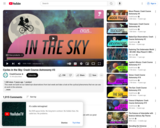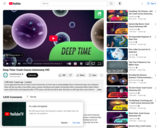These materials are generalizable to any STEM class. They were developed for Introductory Astronomy at Lane Community College. These assignments were developed with the Equity and Open Education Faculty Cohort, hosted by Open Oregon Educational Resources.
The overarching goal is to broaden participation in STEM and increase student success by using creative portfolio assignments which connect course content with various dimensions of students’ lives.
ASTR 121 - Astronomy of the Solar System
4 Credit(s)
ASTR 121, 122 and 123, may be taken out of sequence. This sequence provides an in-depth and comprehensive introduction to the science of astronomy. These courses are designed to serve non-science majors, but also offer a good introduction for prospective science majors interested in Astrophysics or Space Science. These courses have a significant lab component. ASTR 121 focuses on naked-eye astronomy and the science of astronomy focused primarily on our solar system and comparative planetology, the Earth and its Moon, detailed consideration of the individual planets, solar system debris including comets and asteroids, and modeling the origin of our solar system. Lab included.
Prerequisite: MTH 052 or MTH 060 or MTH 065 or MTH 070 or MTH 095 or MTH 111 or placement test.
Learning Outcomes
Upon successful completion of this course, students will be able to:
1. Think and communicate based on familiarity with a wide variety of physical phenomena involving the solar system and the means by which it is described and explained.
2. Think and communicate based on familiarity, in part through direct practice, with observational tools, chains of reasoning and exploration and knowledge of scientific methods that are part of the practice of this area of astronomy.
3. Correctly use scientific reasoning regarding the formation of the solar system, and think and communicate with significant basic conceptual understanding of systems involved in present-day terrestrial and Jovian planets.
4. Converse and comprehend making use of elementary descriptions and laws of mechanical motion and gravity applied to the motion of objects in our solar system.
5. Engage this area of astronomy with an active scientific literacy, which includes use of public resources widely available as part of large scale astronomy investigation.
6. Think and communicate based on an elementary understanding of exploration of the solar system, drawing conclusions from experimental data about possible explanations of physical mechanisms of the solar system and its constituent parts.
7. Formulate questions to move their thinking forward concerning the subject matter of the class.
8. Think and communicate with a familiarity with elementary applications of basic physics underlying the formation and structure of the solar system, as well as interplay of planetary systems such as plate tectonics, volcanic activity and atmospheric evolution.
8. Reflect and communicate on possible uses and impacts of this physics knowledge regarding the solar system.
9. Converse and write about the nature of science with increased sophistication and see physics/astronomy as a science, rather than a body of knowledge.
10. Appreciate that the insights provided by Classical Mechanics and Newtonian Gravity are valuable and useful even though physics has developed beyond Newtonian Gravity and Classical Mechanics and beyond mechanical theories - of which Classical Mechanics is a premier example.
11. Appreciate current efforts to create new insights in this area of astronomy and have a sense of currently open questions within the astrophysics community.













